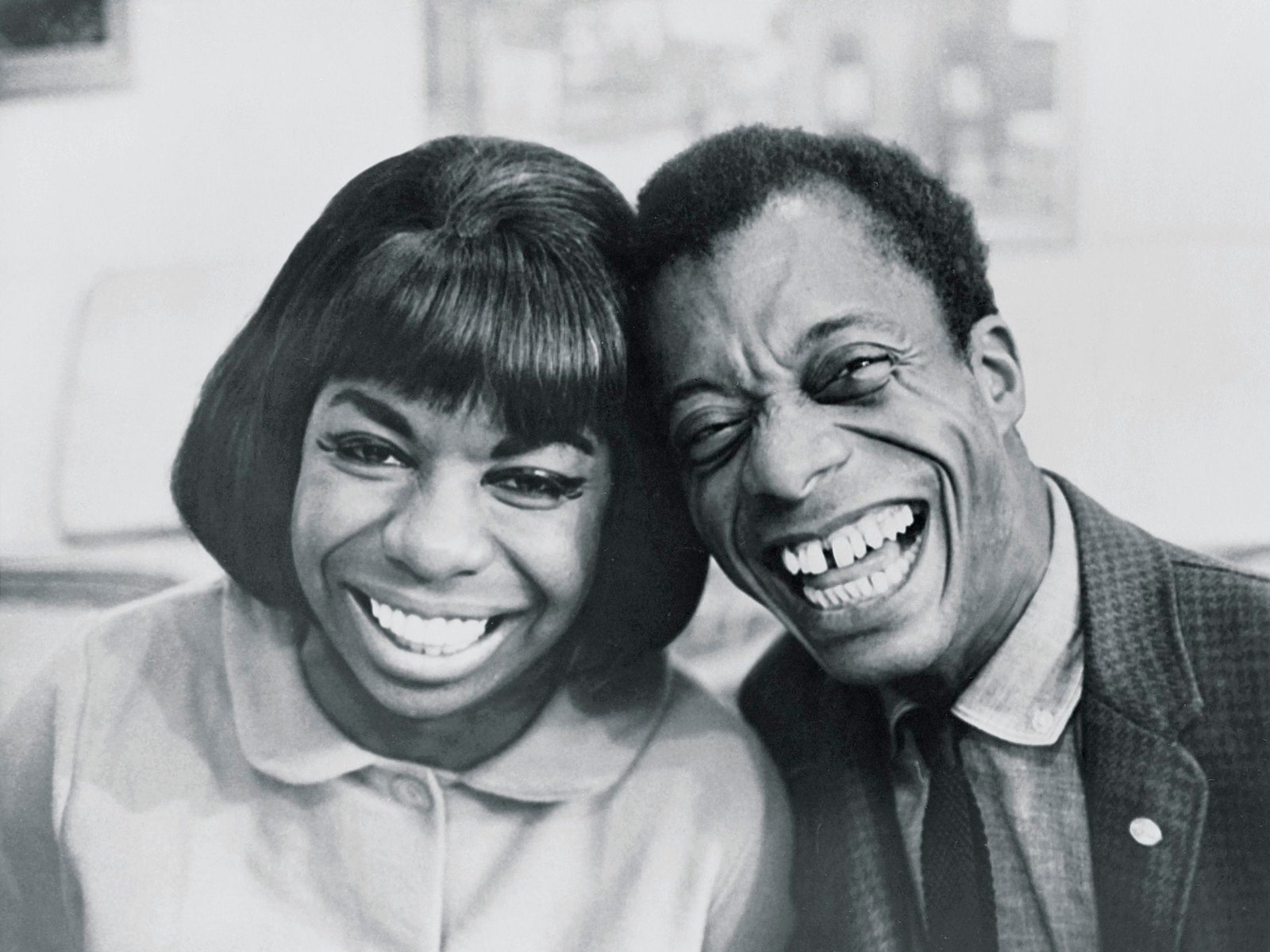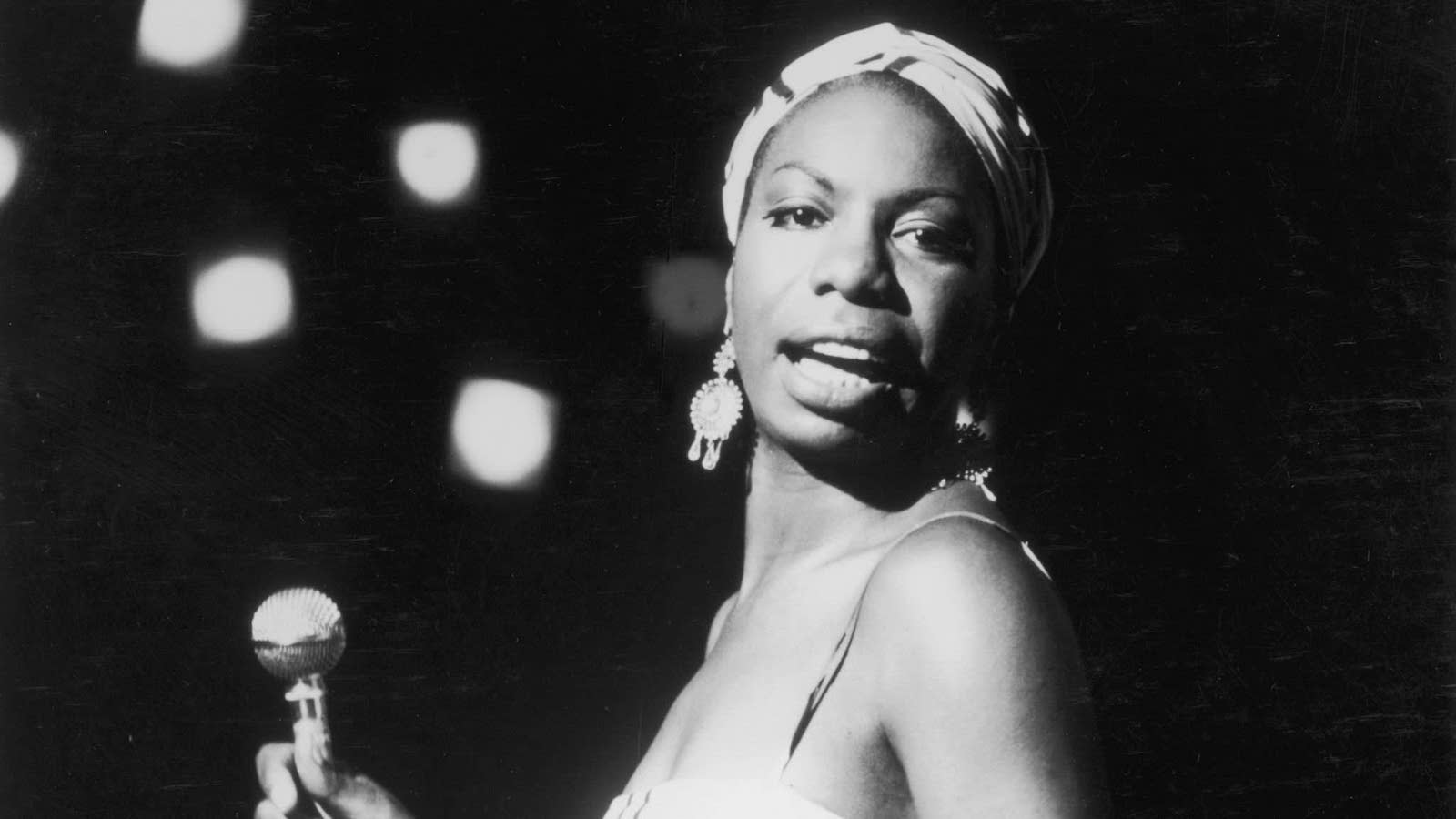
Stop using Nina Simone’s songs to showcase white angst on TV
Nina Simone wrote “Mississippi Goddam,” widely considered to be one of the most influential and powerful pieces she ever made, in less than an hour.
The sudden burst of creativity was a response to the Sixteenth Street Baptist Church bombing in Birmingham, Alabama on September 15, 1963, where four young Black girls were killed in a white supremacist terrorist attack.
As she later described it for interviews, her first instinct was to build a homemade gun with tools from her garage. That proved ineffective, so she turned to the piano instead and wrote, describing the number as her “first civil rights song.”

Interestingly, that is not the only story about Nina Simone and a gun. In 1985, she fired a pistol at a record executive who she blamed for stealing royalties. In 1995, she shot at her neighbor with an air gun because he disturbed her work.
What this should demonstrate is that Nina Simone with a piano was the equivalent of Nina Simone with a weapon.

To be young, gifted, Black, and Nina Simone
Nina Simone is the outlier, in everything. She has never, and will never, be easily catalogued.
Simone avoided classification; her adaptation of jazz, folk, show tunes, classics, and more for segregated and integrated crowds made her impossible to define. Simone adapted African and Hebrew melodies for large audiences. She fit a Bach fugue into a version of her famous piece “Love Me or Leave Me.” She wrote lullabies for civil rights.
Which is why, it is so frustrating, to see her music butchered onscreen to tell predominantly white stories.
Does she move you?
From a cursory search, Nina Simone’s Feeling Good was showcased on:
NBC’s Chuck (to show white couple angst)
Amazon’s The Marvelous Mrs. Maisel (to show a white lady join secretary school, it was supposed to be empowering or something)

NBC’s Zoey’s Extraordinary Playlist (a white lady was singing in a graveyard, but it was about positivity)
NBC’s Parenthood (white couple angst)
Hulu’s The Handmaid’s Tale (white persecution angst)

USA Network’s In Plain Sight (more white people)
FX’s Legion (white mutant angst)
Showtime’s Patrick Melrose (his dad doesn’t love him or something)

Professor Marston & the Wonder Women
CBS’s Person of Interest (spies? white spies? with computers?)
The Intouchables

S4C’s Alys (who knows?)
CBS’s Evil (who cares?)
Repo Men

The Long Firm
HBO’s Sex and the City (ahahahahahahahaha)
Kiss Kiss Bang Bang

Netflix’s Love 101 (white! emotions!)
Simone’s other seminal hit, Sinnerman, has been used in a number of film productions ranging from the good (the 1999 remake of The Thomas Crown Affair) to the deeply embarrassing (BBC’s Sherlock).
What’s interesting about this reliance on her music is that it often is used to define the scene. This is not quiet background noise; her song frames the narrative. What’s also interesting is that in almost every single example used, there was not a single Black woman featured in the narrative!

Go to hell
This dependence on Simone’s music demonstrates the reliance on a Black woman’s struggle without a Black woman’s presence. It’s not like these programs are dubbing their showpiece moments with Nina Simone’s powerful “To Be Young, Gifted, and Black” or “Mississippi Goddamn.”
Simone’s adaptation of Feeling Good is a staple in music history. The song was originally written by English composers Anthony Newley and Leslie Bricusse for The Roar of the Greasepaint – The Smell of the Crowd; a musical based on class struggles within the United Kingdom.
Who actually listens to Feeling Good and imagines anyone other than Nina Simone at the helm? We had to Google that random fact about Newley and Bricusse, because any other version than Simone’s sounds nonsensical.

Feeling Good has been covered by Traffic, Michael Bublé, John Coltrane, George Michael, Victory, Eels, Joe Bonamassa, EDEN, Muse, Avicii, and more. Every cover has drawn on Nina Simone’s interpretation, rather than the original piece by Cy Grant on the UK tour.
This can be applied to any of her adaptations; Who pictures Sinnerman and imagines the Les Baxter Orchestra? The screaming in Screamin’ Jay Hawkins’s I Put a Spell on You is that more sinister and seductive with Simone’s interpretation.

This was her singular talent; most of her well-known and famous pieces were rearrangements or adaptations of previous work. But it was her interpretation that made them immortal. She made every song sound so incredibly personal; whether that was the earnest retelling of The Beatles’ “Here Comes the Song” or “I Loves You Porgy” from the operatic Porgy and Bess.
She took music from every source imaginable and translated it to reflect the Black experience. Like if Google Translate could suddenly interpret language through the filter of Black Lives Matter.

She put a spell on you
Film loves to tell BIPOC stories without BIPOC people.
Stories about persecution and racism are told from the perspective of a white narrator, or the conflict is switched to an alien planet with a host of sexy blue CGI aliens (that somehow look like an unholy mashup of anime and furry porn), and the very real message Simone was telling in her music is lost.
Finance influencer Kego Mogotsi questioned the reliance on sampling such a limited amount from her expansive catalogue.”Why are [television and movie productions] only using those two songs?”

“She gravitated towards Black empowerment,” Mogotsi said, “and [it] readjusts the focus of her work; which is someone who is fighting for Black people. It taints the message of who she was to give a clean[er], sanitized version for white audiences.”
The timelessness of Nina Simone stems from tragedy; her music gave us a library, a catalogue, on Black lives in America. It will continue to be a tragedy until it is recognized, honored, and elevated for what it is and what it has done for the American experience.









TDavis
/
Well done!
May 15, 2022